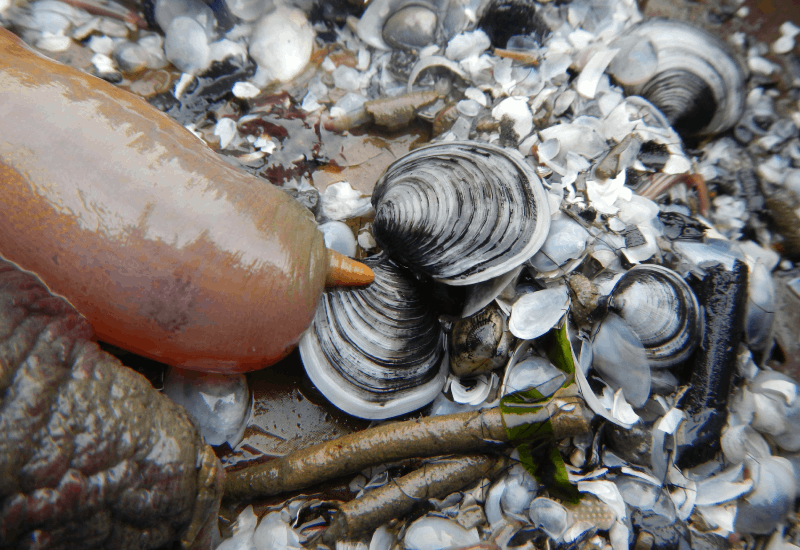Sediment

Chemicals, such as organic pollutants and metals, enter Puget Sound through a variety of sources, including wastewater, industries, atmospheric deposition, and runoff from urban and agricultural sources. Many chemicals stick to particles in the water and sink. Puget Sound sediments trap and can release many of these chemicals, which can make their way up the food chain into the fish that orcas and humans eat.
In addition to being a great record of chemical contamination, sediments also provide essential habitat to many marine species in Puget Sound. Sediment-dwelling invertebrates (benthos) support the Puget Sound food web. They live within the sediment and some even eat the sediment. Several species, including various clams, sea cucumbers, and crabs, are harvested for both cultural and economic purposes in Puget Sound, and many more are eaten by larger animals like fish that humans then eat. These invertebrates are good indicators of ecosystem health because they don’t move around a lot and they can’t escape stressors like chemical contaminants, low oxygen, ocean acidification, or climate change.
To learn more about King County’s routine sediment monitoring and to view data, click on the links below.

 Translate
Translate